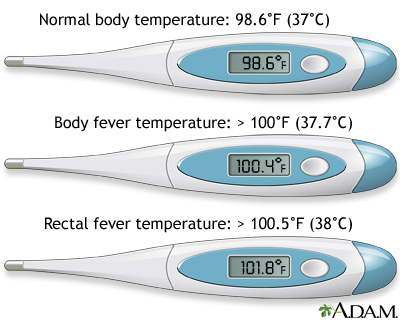What Is a Fever?

If you have never heard the term "fever", then you are in for a big surprise. Fever is defined as the normal development of various types of infections through inflammation. There are different types of inflammation, and the main one that we know is called fever.
There are many different diseases that are affected by fever, but none of them are as contagious or dangerous as diabetes. Diabetes is a condition in which your body produces too much insulin for the glucose you are taking. This forces your body to produce more glycogen, which is stored in the bloodstream. This glycogen is not used because it is produced very quickly.
If your blood sugar is not controlled, your body will store excess insulin and it will be converted to sugar. This extra sugar will cause the glucose to be transported to other parts of the body, including the skin.
It has been found that if there is enough insulin in your blood, your cells do not need to produce glucose for energy. This means that the glucose you take will reach all parts of your body.
In addition to diabetes, there are other conditions that can cause high blood sugar levels, for details see iHealzy. These include pregnancy, excessive alcohol consumption, and long-term illness. Each of these conditions can cause an increase in blood glucose levels, which makes a person very susceptible to developing a high temperature.
Fever symptoms vary from person to person. It can vary from one person to another. It often happens that the fever rises twice a day, although this can vary depending on the severity of the fever.
Pain is a common symptom. When you have a fever, you may notice that there are no serious symptoms, and that's when pain comes into play. The pain can start in the back, abdomen, or hip.
Other symptoms of fever include vomiting, dizziness, increased urination, and heart palpitations. If these symptoms are present, you should seek immediate medical attention. If left untreated, diabetes complications and life-threatening problems can occur.
Another common symptom is headache. If you have headaches, you may find that they are very painful. You may also notice swelling around the eyes and forehead.
These headaches can last up to six hours, but you should seek immediate medical attention to avoid permanent damage

Symptoms of this disease can occur at anytime. For some people these symptoms may go away after a day while others will have them for days. There are times when you may experience these symptoms for a week before you feel any difference in your body.
What causes this illness? Many people wonder whether the cause of this condition is something that you are allergic to.
The answer to this question depends on what you eat and drink. If you have been exposed to mold or fungus that is harmful to the immune system then you could be at risk of having this illness.
Another possibility is the consumption of certain foods or beverages. These include chocolate and citrus fruits.
Some other people are more likely to suffer from these illnesses than others because of certain foods and drinks they consume. These foods can be avoided if you know how they affect you.
Symptoms of a fever can also include fatigue. This fatigue can become very debilitating to some people because it is very hard to get any type of rest.
Another possible complication of this disease is a kidney or liver failure. If you are eating foods that will damage your kidneys then you will also be at risk for developing a fever. If you have diabetes then you will have a higher chance of having these symptoms.